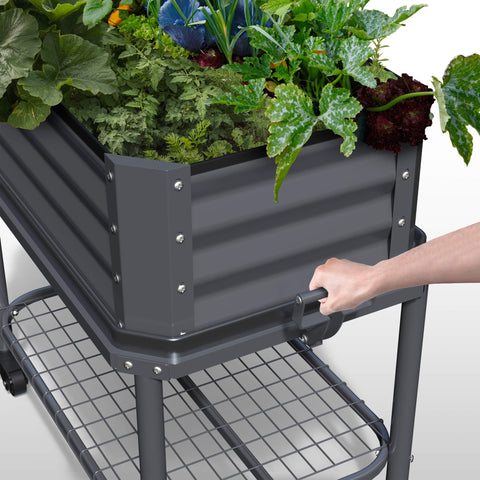Just because you have a small garden doesn't mean you can't grow vegetables. The layout of the garden will help you make the most efficient use of your space, and by using a square foot gardening approach, you'll be able to increase your yield and save water, time, and energy.The following content also has some reference value for raised garden beds.
What is square foot gardening?
Square foot gardening is the practice of planting in a specific way, usually on a raised bed. The beds are divided into areas of several square feet, with each square foot planted with a different vegetable. This method makes efficient use of garden space and often increases production.
Square foot gardening has many advantages. Not only does it make the most of every square inch of dirt, but it's also easy to understand. It requires some planning initially, but less work overall.
Because plants will take up too much space and there won't be much room for weeds, time will be saved, weeding and water will be saved. The efficient layout makes harvesting easier and faster, and you can usually produce more vegetables in a smaller space than with traditional row planting.
Garden design
Square foot gardening methods are usually performed on a raised bed. You can build your own bed or buy a pre-made one. The bed should be no wider than four feet. Anything wider than that is hard to impress in the middle.
Choose a sunny spot with at least 6 to 8 hours of sunshine a day. You also need to make sure you can water your plants easily. Fill your bed with rich soil. You can make your own or buy a mix. A combination of about 1/2 topsoil and 1/2 quality compost is a good ratio.
MEL Bartholomew, author of Square Foot Gardening, recommends using a mixture of one-third compost, one-third peat moss, and one-third vermiculite. Compost should use a variety of nutrients from at least 5 different sources. Examples include manure, green waste or yard waste. Make sure the mixture is at least 6 inches deep in the bed.
Garden layout
To plan your garden, first measure your bed and then draw it on squares of paper. The concept of square foot gardening is to use each square foot to grow different types of vegetables. You don't need to include walking or working space in bed. You will walk and work outside.
Put the taller vegetables on the north side. Vines and tall plants, such as green beans, squash, cucumbers, and tomatoes, need a trellis or stand to grow on, rather than sticking out. For colder weather crops, determine the ripening date (on the seed package) and decide what warm-season plants to plant in that square after harvest.
Before you start planting, use string to divide your seedbed into square foot areas. This will help you get the spacing right. Create a permanent mesh using trims, nails and strings, wood lathes, PVC, etc. Try to keep your grid on throughout the season to help you replant.
Proper care and maintenance of your garden bed is the best way to succeed. Be sure to water frequently to keep the bed moist, not damp, and weed as often as possible. Rotate different types of plants in the garden each year. Growing the same plant in the same place year after year is an invitation to disease.
Square feet gardening spacing
The size of the mature plant will determine how many seeds to plant in each square. You can grow 1, 4, 9 or 16 equally spaced plants per square foot. Use your fingers to divide the square into smaller grids. Large plants have only one seed per square foot in the middle. Smaller factories need to divide the square into 16 squares. Do not plant more to prevent the extra work of constantly pruning overcrowded plants.









